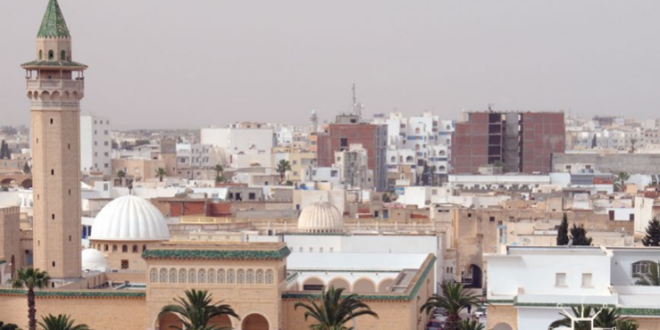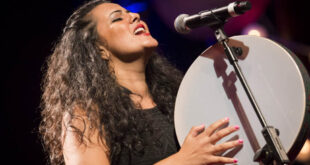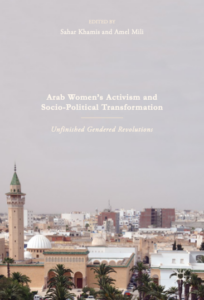
SE: Where did the idea of this book project come from?
SK: The book’s idea was a product of my deliberations with my co-editor, Dr. Amel Mili, who is Tunisian-American. She was a faculty member at the University of Pennsylvania back in 2015, and I was a visiting scholar with the Annenberg School of Communication there at the same time. We met at one of the events at the University of Pennsylvania. She said, ‘I have a book project that I'm putting together, and I need a good co-editor.’ It was a big undertaking, because we had many contributors, but we both agreed to rise up to the challenge.
SE: What was the process of putting this book together like?
SK: Of course, like everything else, it does have its pros and cons, but, overall, it was a great eye-opening experience. Whenever you're co-editing someone else’s work, you're being exposed to all of these different views and perspectives, some of which you're going to agree with, and some of which you won’t. You just have to do your job of being a good editor, and not interfering in the content. As an editor, I had to completely detach myself from what I was reading. So, whether I agree with you or disagree with you, I still have to read the manuscript with utmost respect for your views, because they are your views, not mine. Just grappling with this idea of coming across different content, which I did not always personally agree with, was a learning moment for me. You have to really exercise some kind of self-restraint, as an editor, to maintain your professionalism and to preserve the integrity and neutrality of the editing process.
SE: What are the main takeaways from the book? And how is feminism defined throughout?
SK: I think that the book makes a number of important contributions to the field of Arab media, in general, and the field of gendered activism and feminist activism in the Arab world, in particular. One of the important takeaways is the plurality and multiplicity of gendered identities within the Arab region. There is never a “one size fits all” when it comes to thinking about the issue of activism, which is why we should use the term “activisms” in the plural. The same thing with “feminisms,” there is never a “one size fits all” type of feminism, which is, again, why we should use it in the plural. This is not just applicable when we compare Arab women to Western women, for example. It is also applicable when we compare women from different parts of the Arab world. We have to steer away from the whole notion of imposing some kind of pre-prepared, pre-packaged form of Western feminism. Rather, we have to create our own homemade feminist recipe. When you buy a package off the shelf, it's already pre-prepared, right? It's very different in terms of taste, flavor, and nutrition compared to something you cook at home. That's how I like to think about the phenomenon of feminism. We should try to always create our own homemade recipes of multiple feminisms, which should be contextualized within our own cultural, social, political, and socio-economic realities, which, of course, are different, not just between the West and the East or the Western world and the Arab world, but even within, and across, different Arab countries.
SE: And what about the authors? Who contributed to this volume and how were they selected?
SK: There are 11 chapters in this volume. It's very interesting that we have contributors from different Arab countries, as well as non-Arab countries, in addition to the plethora of topics that are tackled. For example, there are authors who wrote about Saudi Arabia, Bahrain, Lebanon, Tunisia, Morocco, and Egypt. So, the diversity of the Arab countries which were examined in this volume is awesome, but so is the diversity of the contributors to the volume. We have, for example, an American contributor and a contributor from Japan, and also—most notably—a male contributor, who wrote an excellent chapter on Morocco. I have always believed in both the “insider’s knowledge” and the “outsider’s gaze.” The “insider’s knowledge” means that you have to acknowledge the value and expertise of the indigenous voices coming from within the Arab region; but you also have to take into account the “outsider’s gaze,” which refers to the perspectives of outsiders, that are equally important. This is because if you visit different countries, you are going to see things that those who are living inside each country cannot see themselves. So, we strive in this volume to create some kind of balance and equilibrium, through creating a cross-fertilization of the “outsider’s gaze” and the “insider’s knowledge.” Equally important, is the fact that we do not turn a blind eye to the significance of having male allies, who can support women’s issues and express solidarity with their causes.
SE: It is definitely important to have a diversity of voices. Can you give some specific examples of what we will find in the volume?
SK: Both myself and my co-editor strongly believe that men are also gendered beings. Therefore, we cannot just think of gender as confined to women only, because every human being has a gendered identity. Men who are feminists can be strong allies for women. So why should we sideline them, or, even worse, think of them as enemies? To that effect, I'll say that one of the contributors, Dr. Brahim El Guabli, wrote an excellent chapter about Moroccan women and their activism, and he described how they suffered from so many different challenges and hardships. There is also diversity across different countries and cultures. For example, one of the interesting chapters in this volume was written by a Japanese author, Namie Tsujigami, about the driving ban in Saudi Arabia. Of course, the driving ban has been lifted since the book’s publication. However, she was trying to complicate the issue by adding much-needed nuance to the often simplistic representation of the driving ban. For example, she interviewed some Saudi women who didn’t want to be bothered with the burden of driving, and, therefore, they were perfectly alright with the driving ban. This reminds me of the misinformed and stereotypical discussions about the veil, the hijab, which is a popular topic that people, especially in the West, always like to tackle. People might think, “Oh my god, the veil is restrictive and it's very suppressive.” Well, guess what? It can be very liberating, when it is your personal choice, and it can even be a symbol of resistance, when you fight for it. In other words, it could never be seen in black and white terms.
SE: How did the political upheavals and socio-political changes in the region throughout the last decade or so impact the topics covered in this volume?
SK: People mistakenly believe that Arab women's activism is confined to the Arab Spring moment. The Arab Spring, undoubtedly, brought about fantastic images of young women going out in the streets chanting slogans, side by side with men, and they did not just play a “supplementary role” in terms of being the caretakers and the nurturers of men. Rather, Arab women were at the frontlines of resistance themselves, putting their own lives at risk, and risking harassment, rape, imprisonment, or even being killed, and some of them, indeed, became martyrs. But as much as this is a glorious moment, and a very important one, the volume also gives you a more detailed account of the different phases, and faces, of Arab women’s activisms and feminisms in the region, which extended before, during, and after the Arab Spring uprisings. You have the phase prior to the Arab Spring, which was characterized by “top-down, tokenistic feminism,” that did not trickle down sufficiently to wider segments of women in Arab societies. What the Arab Spring brought about was a shift from this type of “top-down feminism” to a much more grassroots “bottom-up feminism” that comes from women themselves. Then you move to the post-Arab Spring phase, with all of its challenges and derailments in the process of democratization, which was paralleled by an increasingly shrinking margin of freedom, in general, and press freedom, in particular. All of these constraints, which were imposed in both the political and the mediated spheres simultaneously, in a number of post-Arab Spring countries had dire implications on Arab women’s activism, as discussed in numerous chapters in this volume.
SE: Can you provide some specific examples of this type of feminist activism and its challenges?
SK: In my co-authored chapter in the volume with Bahraini journalist, Nada Alwadi, we talked about the constraints that women in Bahrain had to endure as a result of the suppression of the uprising and the stifling of freedom in their country, which, therefore, meant that they were not able to exercise a lot of freedoms, like the ability to really engage in some kind of activism on the ground. Many of them started to flee the country and to live in self-imposed exile in the diaspora for their own safety and the safety of their families. Of course, there are other Arab countries suffering from similar phenomena, including the derailment in democratization and the stifling of freedoms. This meant that, in many cases, even the online space is not safe anymore. For women, in particular, that becomes even more dangerous, because they become subjected to online shaming, character assassination, smearing, and stigmatization, which are particularly more destructive and dangerous for women in conservative, traditional societies.
SE: I agree with a lot of what you are saying, but I feel like your outlook is a little pessimistic, because of the sort of shift we have witnessing over the last few years, partially because of Egypt's #MeToo moment. Some of it was a disaster, but not all of it was. There are now online platforms that call people out, and there are new laws, which, in some cases, have been successfully implemented. So, I do feel like there are reasons to be pessimistic, but I also feel like we've seen some positive changes lately. And, yes, with respect to the higher risk women face online, we should never underestimate it. The real impact that this type of cyberbullying has on women's lives is completely underrepresented and underplayed.
SK: I totally agree. Definitely, new online initiatives, such as the anti-sexual harassment campaigns, have been very effective in the Arab region lately. In fact, one of the chapters in this edited volume, written by Nahed Eltantawy, tackles the anti-sexual harassment movement, especially in Egypt. She talks about mobile applications, like Shoft Taharosh (I have seen harassment) and HarassMap, and others which try to locate the harassers and pinpoint them to show people where the dangerous areas are, and where there's a high risk of sexual harassment. Women really mobilized not just for political purposes, but also for social purposes. There is this so-called “double jeopardy,” which means that women are fighting the political struggle, side by side with men, but they are also fighting a social struggle on top of it. In other words, if you are an Arab woman, you are not just struggling for freedom and democracy, rather, you are also struggling to get recognized and to achieve gender equity and equal pay. You need to have a place at the table and to be respected socially, which includes speaking in the public sphere, running for office, getting elected, remaining safe, and being protected from any kind of violence or harm, both online and offline.
SE: A lot of this requires not just action on the ground, but also changes in the legal system as well. How is this addressed in the volume?
SK: Absolutely, and that is another important theme in this book. My co-editor, Dr. Amel Mili, is Tunisian-American and she was a judge back in Tunisia. People rarely talk about laws, but laws are very important. The book focuses on three parallel struggles that Arab women are constantly grappling with; the political struggle against autocracy and dictatorship, the social struggle against patriarchy and stagnant social traditions, and the legal struggle against discriminatory laws. Most importantly, there is also a negative societal mindset around women's issues; which tends to underestimate the significance of these issues. This is evident in common statements, such as: “Let's take care of the country first, and then we can pay attention to women's issues later,” as if women are not part of society. Women are half of society, and they give birth to the second half. Therefore, ignoring them and turning a blind eye to their interests is always detrimental. We have to admit that when you're living in a patriarchal society, unfortunately, women's issues are oftentimes completely ignored, or they're not given sufficient attention.
In her chapter in the volume, my co-editor, Dr. Amel Mili, unpacks these three struggles from the Tunisian perspective, informed by her background as an administrative judge in Tunisia. She also raises attention on this particular point about the legal aspects. The chapter discusses Tunisia as the cradle of the Arab Spring, examines gender rights in Tunisia, and why Tunisian women have been enjoying greater freedoms compared to the rest of the Arab world. One of the reasons is literacy. The literacy rate among Tunisian women is much higher than in other parts of the region. More women are educated and are afforded better educational opportunities, but also more women are on the bench (are judges), and that's a very important thing because then they can replace some of the negative laws, and can enact new laws, for example the domestic violence or gender-based violence law that was established in Tunisia. This became a success model, because it did not just define gender-based violence as domestic violence inside the home, but rather, as a societal issue, which is really holistic and comprehensive. If women are denied a job because of their gender, it is economic violence; if they face job discrimination, it's economic violence; if they're not able to run for office or to be elected, it’s political violence. So, it took the issue of gender-based violence out of the domestic sphere into a much more public, comprehensive, and holistic sphere.
SE: The book also discusses the important concept of Arab women’s invisibility. Can you elaborate on this point?
SK: The book talks about three levels of invisibility that Arab women have been struggling and grappling with. There's invisibility in the academic sphere, where there is not enough literature on Arab women's activism and gendered resistances. Indeed, this book is hoping to fill some of these gaps and help to contribute to this particular area, to bring more attention to this blind spot of underrepresentation in academic literature in terms of women's gendered activisms and resistances. And then you have invisibility in the socio-economic sphere. Women are working long hours, they're not paid to work, and it’s by and large undocumented. These women are viewed as housewives, when in fact, they are contributing tremendously to the economy. Finally, you have invisibility in the media, where images of women do not tend to convey reality. The majority are skewed misrepresentations and stereotypical images. In many cases they are negative images, which show women as repressed or suppressed, as weak, or excluded from decision-making. Additionally, they also become overly sexualized objects, like belly dancers or mistresses without agency. The book tries to defy these three levels of women’s invisibility: academic, socio-economic, and representations in the media.
SE: I want to ask you about the inclusion of men in feminist discourse. In the Western world, the inclusion of men, or having men as allies of feminist movements in general has become more common. I'm wondering if you've noticed a difference in how that inclusion is taken on, or perceived. How welcome it is within both regions: the West and the Arab region?
SK: Dr. Brahim El Guabli, who contributed the chapter on Morocco, is Moroccan-American, so he has a foot in each world and acts as a good bridge, not just between genders, but also between different cultures. However, the question is about acceptability: How is society accepting this notion of talking about women's issues and having men who are feminists? Feminism, unfortunately, is still seen as a dirty word. People tend not to understand the term feminism and correlate it with women who are rebellious, unethical, and immoral. I think this misconception is universal, but gets worse in the Arab/Muslim world. This is something we need to work on as a society, to make people understand that feminism is not a dirty word. Feminism is about women's rights, and women should have a place at the table. If you don't have a place at the table, you will be on the menu. Women have been on the menu for a long time. I think that the idea of having male allies is still not very much the norm because there's still not enough understanding and appreciation of it. This is the case either because of those who think that women's issues should only be addressed and tackled by women, or because the idea of having a male at the table is frowned upon. Men are fathers, they are husbands, they are partners, they are sons, they are brothers, they are colleagues, they are co-workers. If you try to say, “Okay, I'm not going to deal with them, they are the enemy.” How helpful is that going to be?
SE: What has changed since the book’s publication and what has stayed the same?
SK: When you talk about the things that were not covered in the book, of course, some things have changed [since publication]. Like I said, Dr. Tsujigami, who wrote about the driving ban in Saudi Arabia, that, of course, has changed with the driving ban being lifted. The guardianship law has also been modified and changed. These moves, however, did not create a shift in societal mindset sufficiently. As I’ve mentioned, laws are very important, but they're not sufficient on their own. How are people looking at women who are driving? Are they welcoming them or not? You cannot erase years of a heavy, rigid, and very traditional interpretation of religion overnight. It's not going to happen. That can take years and years of work, starting from the new generation, in order to change.
The #MeToo movement and anti-harassment campaigns really grew and spread after the publication of the book. The book talks about some of the early phases of these efforts, but now, there is more resonance on social media, and there are more campaigns. There is also the very important point about COVID-19, which, of course, happened in 2020 after the book was published. COVID-19 had negative impacts on everyone, but it had an even worse impact on women in particular. Many women lost their jobs, lost their support systems, not to mention the increasing digital divide, which became much worse for women in the Arab world. So, if we were to edit another volume of this book, we would account for all of these new developments, which took place in the Arab region and the world at large, and study their effects and implications on Arab women.
For more read Info-Deficiency in an Infodemic: The Gender Digital Gap, Arab Women and the COVID-19 Pandemic, by Dr. Sahar Khamis and Eliza Campbell.
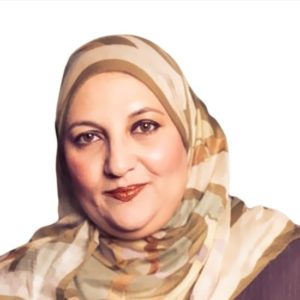
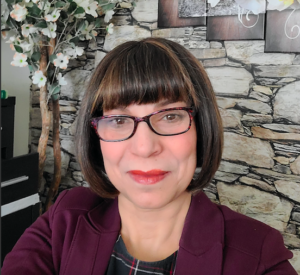
 Arab Media & Society The Arab Media Hub
Arab Media & Society The Arab Media Hub
